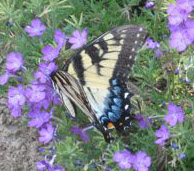Dear Friends, This is not all… but an attempt to bring to our collective consciousness the new funal infections that are being spurned by Montsanto’s GMO Corn and Soy and Round-Up Ready Pesticides.
www.integrativeholistichealth.org
OUR EARTH’S TROUBLED IMMUNE SYSTEM
One of our nation’s senior scientists, Dr. Huber, Purdue University Professor Emeritus of plant pathology. alerted the federal government to a newly discovered organism that may have the potential to cause infertility and spontaneous abortion.
Dr. Don Huber, professor emeritus at Purdue University, believes the appearance and prevalence of the unnamed organism may be related to the nation’s over reliance on the weed killer known as Roundup and/or to something about the genetically engineered Roundup-Ready crops. In a letter to Secretary of Agriculture Tom Vilsack, the professor called on the federal government to immediately stop deregulation of roundup ready crops, particularly roundup ready alfalfa.
January 16, 2011
Dear Secretary Vilsack:
A team of senior plant and animal scientists have recently brought to my attention the discovery of an electron microscopic pathogen that appears to significantly impact the health of plants, animals, and probably human beings. Based on a review of the data, it is widespread, very serious, and is in much higher concentrations in Roundup Ready (RR) soybeans and corn—suggesting a link with the RR gene or more likely the presence of Roundup. This organism appears NEW to science!
Unique Physical Properties
This previously unknown organism is only visible under an electron microscope (36,000X), with an approximate size range equal to a medium size virus. It is able to reproduce and appears to be a micro-fungal-like organism. If so, it would be the first such micro-fungus ever identified. There is strong evidence that this infectious agent promotes diseases of both plants and mammals, which is very rare.
http://farmandranchfreedom.org/gmo-miscarriages
http://action.fooddemocracynow.org/sign/dr_hubers_warning/
View the full video interview with Dr. Huber here
BEE COLONIES COLLAPSING – All colonies had a fungus and virus
Applying proteomics-based pathogen screening tools in 2010, researchers announced they had identified a co-infection of invertebrate iridescent virus type 6 (IIV-6) and Nosema ceranae in all CCD colonies sampled.[18] The study is the first to conclude that co-factors, the virus and fungus, were present in all of the collapsed colonies studied.[19] However, scientists in the project emphasize additional research is still needed to consider how environmental factors like temperatures, drought and pesticides might play a role, if any, in CCD.[19]
FROGS AND BRAND NEW FUNGUSÂ — Bd — An Invasive Species Whose Origin Is Not Known
Everyone knows that frogs are in trouble and that some species have disappeared, but a recent analysis of Central American frog surveys shows the situation is worse than had been thought.
Under pressure from a fungal disease, the frogs in this biodiversity hot spot are undergoing “a vast homogenization” that is leaving behind impoverished communities that increasingly resemble one another.
Bd (a new microscopic fungus) is an invasive species whose origin is not known.
The fungus is devastating to frogs because it infects the skin, a much more important organ in amphibians than in other vertebrates. Many frogs breath and drink through their skin and use it as we use our kidneys to maintain the proper concentrations of ions such as sodium and potassium in their bloodstreams. As frogs sicken, their skin peels or sloughs off.
Hoping to find a data set appropriate for the kind of analysis he had in mind, Smith got in touch with Lips, a scientist who has monitored amphibian declines in Central America for many years.
“The basis of this paper is her decades of work in this area,” says Smith, “and the astonishing data set they produced.”
Lips had species lists from six sites both before and after Bd appeared, and she was able to obtain data from two more sites, for a total of eight.
At her study sites, Lips and her graduate students had walked transects during the day and also by night carrying flashlights, looking for frogs, salamanders and reptiles, listening for their calls, and sifting the streams for tadpoles.
“We already knew,” Smith says, “that at each site we were losing roughly half the species. Our analysis confirmed this. Before the fungus, an average 45 species were observed at each site; after the fungus, the average was only 23.
In homogenizing the frog communities, the fungus erased chapters in evolutionary history.
Homogenization also knocked out ecological diversity. Before the invasion there was a good mix of species in the region. Some species lived in streams, others on land, in trees and underground. But the primarily aquatic fungus killed most of the water-loving species.
“Now the frog communities are typified by terrestrial species,” says Smith, “which has changed the whole way the system works ecologically.”
http://esciencenews.com/articles/2009/09/22/mcdonalization.frogs
WHITE- NOSE SYNDROME — BRAND NEW FUNGUS — KILLING BATS
Bats eat mosquitos, that carry such diseases as West Nile Virus, and other insects, and their loss may lead to increase use of pesticides, damage to forests and agriculture and potential pulic health risks.
http://farmandranchfreedom.org/gmo-miscarriages
